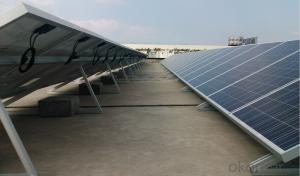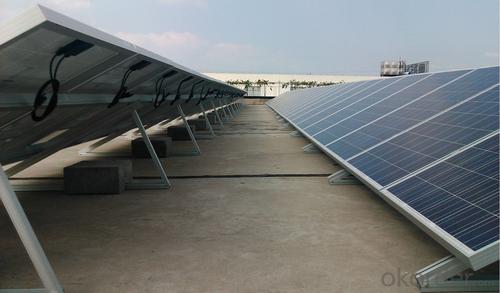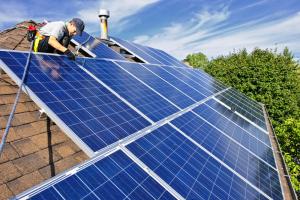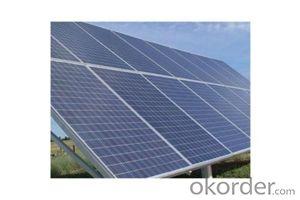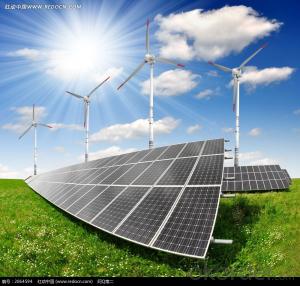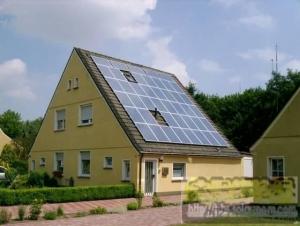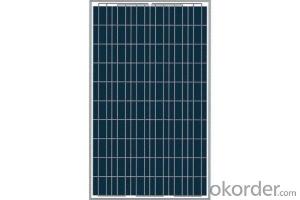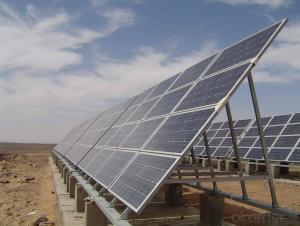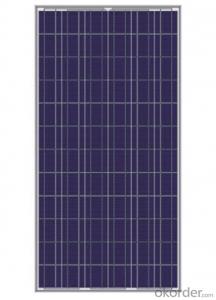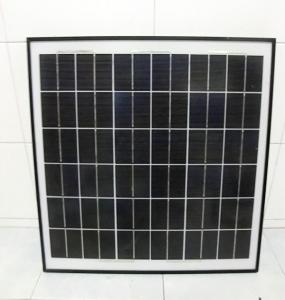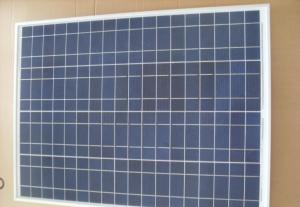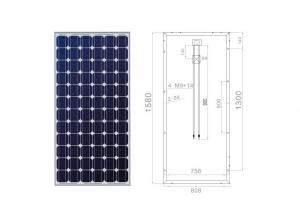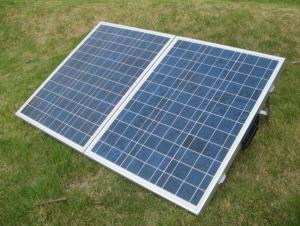Hero Solar Panels:UL and TUV Approved High Efficiency 65W Poly Solar Panel
- Loading Port:
- Shanghai
- Payment Terms:
- TT OR LC
- Min Order Qty:
- 10000 watt
- Supply Capability:
- 20000000 watt/month
OKorder Service Pledge
OKorder Financial Service
You Might Also Like
Specification
1.The Description of Product
Nowadays, with the shortage of the energy sources, people start to develop the solar energy, a new long lasting sources of energy which can be used almost anywhere. Why solar energy become so popular, we summarized the below some advantages of solar energy.
Type | CNBM Solar Polycrystalline Series |
Materials | Silicon |
Guarantee | 12 yrs free from defects in materials and workmanship No less than 90% within 10yrs and no less than 80% within 25yrs TUV(IEC61215&IEC61730), CE, UL |
Application | Photovoltaic/ solar/ green energy/ energy saving |
Descriptions | 1.High efficiency crystalline silicon solar cell. Even if under the weak light, the solar module can produce maximum power output. 2.Tempered glass (toughened glass): Anti-reflecting coating and high transmission rate glass increase the power output and mechanical strength of solar module. 3. EVA and TPT: Using high quality EVA and TPT to prevent destroying and water. 4. AI frame: Without screw, rner connection. 6 holes on the frame can be installed easily. 5. Junction box: Multi function junction box with water proof. 6. Long lifetime: ≥25 years; Less power decrease. 7. Good performance of preventing from atrocious weather such as wind and hails. 8. Resisting moisture and etching effectively, not effected by geology. 9. The certificate issued by international authority: UL, TUV, IEC, CE.
|
2.Production Line
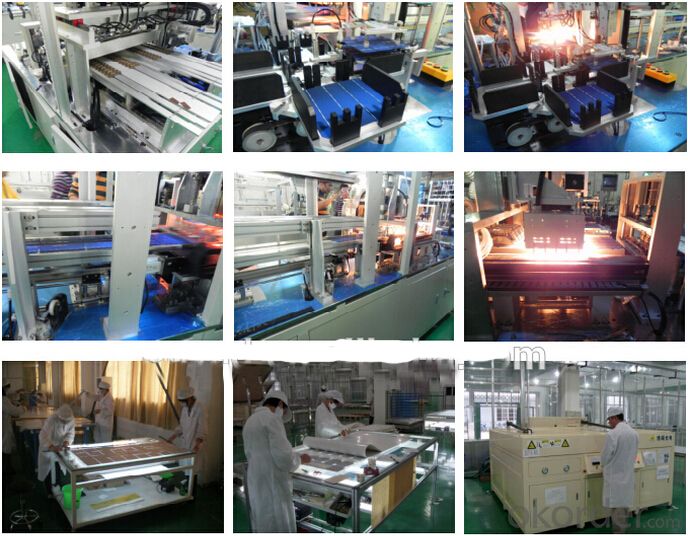
3.The Pictures of Solar Panels
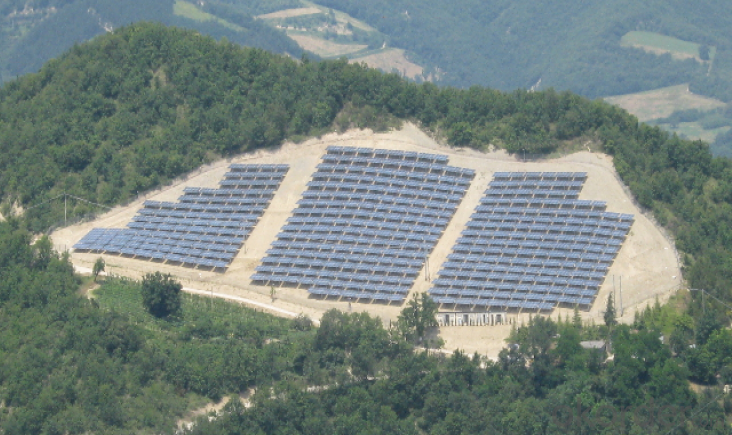

4.Packing
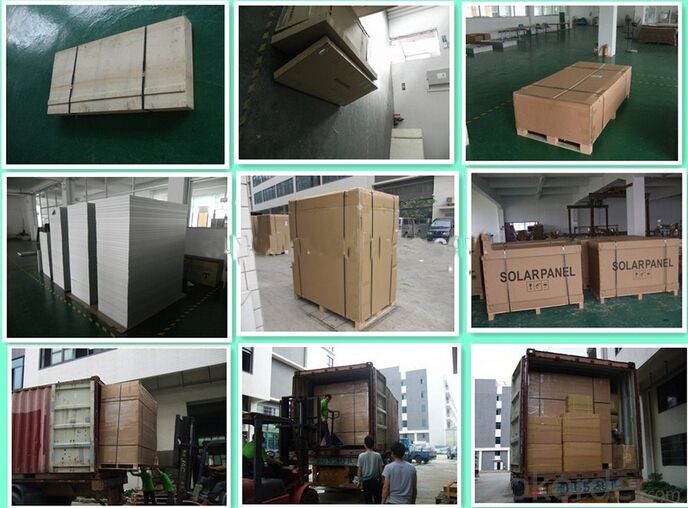
5.FAQ
1). How to buy?
Contact with the talking button.
2).Can you do OEM for us?
Yes, we can.
3). How long can we receive the product after purchase?
In the purchase of product within three working days, We will arrange the factory delivery as soon as possible. The perfect time of receiving is related to the state and position of customers. Commonly 7 to 10 working days can be served.
4). Can we visit your factory?
Sure, welcome at any time is believing.
- Q: Hello, I have been trying to go green, I Have purchase somesolar panel they are about 45watts I been putting it against my window and getting ok power out of it enough for my lights and a couple of low watts gadget (cellphone, 2v light, portable dvd) for couple of hours.But its seem to drain the 2v faster then I can charge Am I getting the most power out of my panel?Or should I place it on the roof? I'm in Texas and it gets hot and sunny the sun beam my room windows pretty good during 4pm-6pm.
- The MOST efficient placement is on a motorized mounting that constantly moves it to face the Sun directly. Almost nobody does that because it is clumsy and expensive. The best fixed position is facing X degrees due south of straight up, where X is your latitude. I am in Austin, at about 30 degrees latitude, so on the south side of a 30 degree pitched roof would be ideal. The direct south facing it the best average to catch morning and afternoon sun, with most efficient pointing at noon. The tilt equal to latitude is the best average between the high Sun in summer and low Sun in winter, with most efficient pointing in spring and fall.
- Q: discription how does solar panels save energy
- Solar panels doesnot work on electricity.They absorb solar energy emitted by sun and thus work without the usage of electricity.If we use them then there will be automatically reduce the elctricity bills as we dont need to switch on.They use natural source to switch on for which we don't need to pay.
- Q: Solar panels are all divided into these squares, forming a grid like pattern. Is it possible to have a single piece of solar panel?
- These grids are required to absorb heat from sun and increasing the energy productivity :)
- Q: So I want to power one of my car fans with some solar panels. I ordered quite a few and I want to power one of my fans under the hood. I've already disconnected the fan and pulled it out of the car to test it later.What all do I need besides the panels, fan, and wiring to make this work. This fan will not be tied to any other system. Currently, the fan is not operated by the car or any system of the car due to a modification made to the automobile allowing me to disconnect it from use months ago.Using the fan powered from the solar panels would help with the modification to increase air flow and speed into the area.Could someone please help me by telling me what else I need to make the fan operational from here?
- You may not like it, but the answer's still the same. A car fan will draw anything from a few to several hundred watts, depending on which fan you're talking about (A/C, ventilation, cooling). A solar array will take up roughly one square meter to generate 00 Watts with the sun shining straight down onto it, so you'll need to cover (more or less) the entire roof (or hood) with solar cells in order to power that fan (minimum). If you still want to go ahead: Solar panels, Fuse, cables. Preferrably one cut-out diode per panel (in addition to the hopefully present internal diodes in the panels) in order to prevent one panle dumping its load into the next instead of into the fan. Much better option: get a low power fan (e.g a slow running computer fan) and connect it to that panel of yours. These fans make do with about 0 Watts (at a much lower air throughput), so you'll actually have a chance of running it from the solar panel without coverig your car in panels.
- Q: Im fourteen and looking for a career I already know solar panels capture the sun and turn it into energy but i would like to know more.
- A solar panel is a collection of solar cells (photovoltaic cells) connected together and put in an enclosure. The solar cells work by taking advantage of the photovoltaic effect. The effect is that in a semiconductor P-N junction, when photons of suitable energy strike the junction, an electron and electron-hole pair are generated. This creates a voltage difference between the two sides. When this voltage is applied to a circuit, the electrons are able to flow through, creating usable energy.
- Q: Most solar panels (the flat ones that go onto roofs of houses) reject electricity produced by the panels if they are too low in voltage. For example, on a cloudy day, although the panels may still get some sunlight to produce some electricity, it is rejected because its too low in voltage. So, does anyone have any ideas?
- apart from, the way image voltaic panels are under pressure jointly can impact the voltage output. If the panels are under pressure with the output of one connecting to the enter of the subsequent, or in sequence, the voltages of the panels upload up. case in point, in case you have 4 2 Volt panels under pressure in sequence, the finished voltage of the array could be 40 8 Volts. If the panels are under pressure so as that each and one and all their inputs and outputs are linked, or in parallel, those comparable 4 panels could have a entire voltage of 2 V, however the gadget could have 4 circumstances the present (Amps) of one panel.
- Q: If you buy everything you need for a grid-tied solar set up, can you install it yourself or is it required that a professional installs it?
- Solar panels have to be installed by a professional in order to get the government rebates. Also the systems must meet state and local electrical codes. Most modern inverters will not turn on unless there is live power from the MAINS, so a ultility company is NOT required for any installation anywhere. There are plenty of electrical contractors and speciality solar contractors out there to help you to make sure that the system is properly designed with the correct components, properly installed, and legally certified. Also many states require a permit that may have a large fee before any installation and may not allow the homeowner, especially for city homes, so it is best to check first. You might be able to get away with it if you live in the country, but consider the safety as well. See if you can work with your contractor to get the materials that you both agree upon as well. They can help guide you based upon their experience. Also shop around for pricing as the panels are now going below $ per watt !
- Q: Can solar panels be used for heating a greenhouse?
- Yes, solar panels can be used for heating a greenhouse. Solar panels can generate electricity, which can then be used to power heating systems in a greenhouse. Additionally, solar thermal panels can directly capture the sun's heat and transfer it to the greenhouse, providing an efficient and sustainable heating solution.
- Q: I would love to put in solar panels on my roof, but how hard would it be, and how expensive? Would I be able to do the work myself, or would I have to hire a pro?Also I live in Oregon, so much of the time it is overcast, so would it really be worth it?
- Not worth it unless you can get a fat subsidy. But Congress is working on a bill to provide a significant subsidy, and Oregon may have one as well. A solar plant costs about $0 per watt of installed capacity, and can produce a maximum of two kWh per watt per year -- which is worth about two bits. Without a subsidy, you are better off leaving your money in a savings account.
- Q: How much roof space is needed for solar panels?
- The amount of roof space needed for solar panels varies depending on various factors such as the size and efficiency of the panels, the energy requirements of the building, and the geographical location. However, on average, a typical residential solar panel system requires approximately 100 to 400 square feet of roof space.
Send your message to us
Hero Solar Panels:UL and TUV Approved High Efficiency 65W Poly Solar Panel
- Loading Port:
- Shanghai
- Payment Terms:
- TT OR LC
- Min Order Qty:
- 10000 watt
- Supply Capability:
- 20000000 watt/month
OKorder Service Pledge
OKorder Financial Service
Similar products
Hot products
Hot Searches
Related keywords
